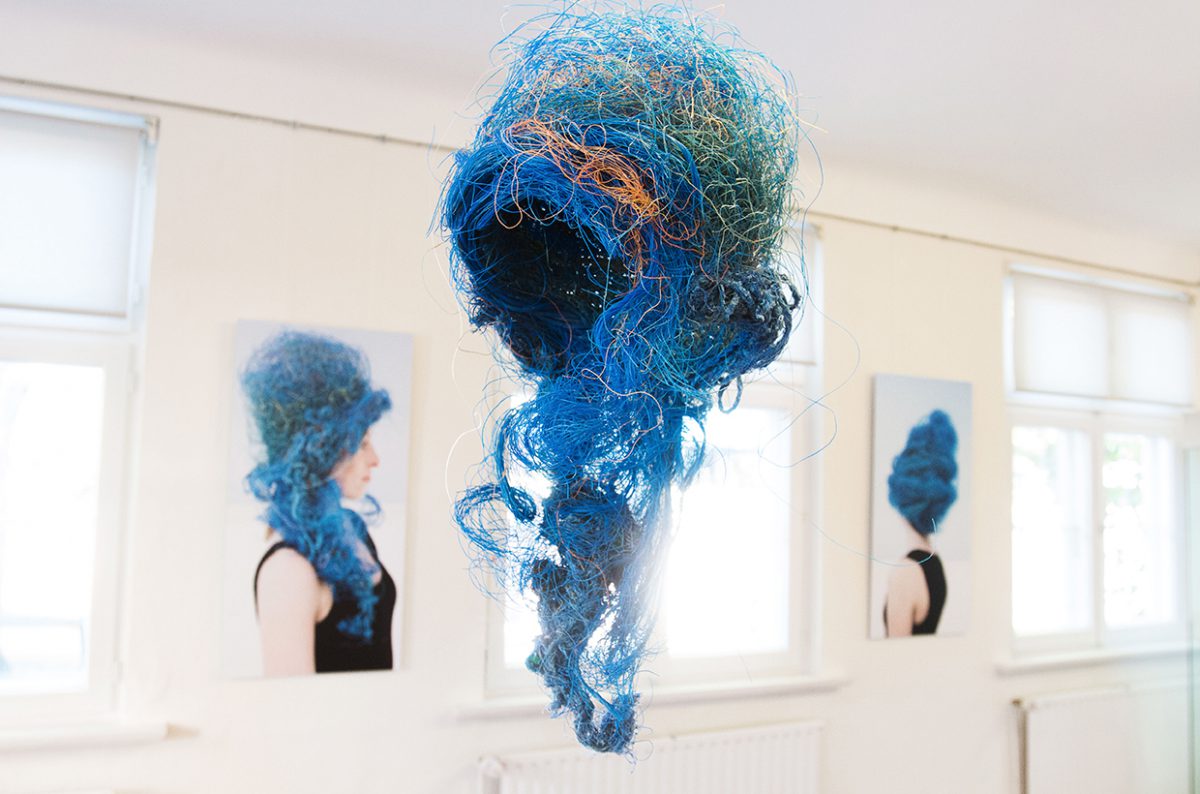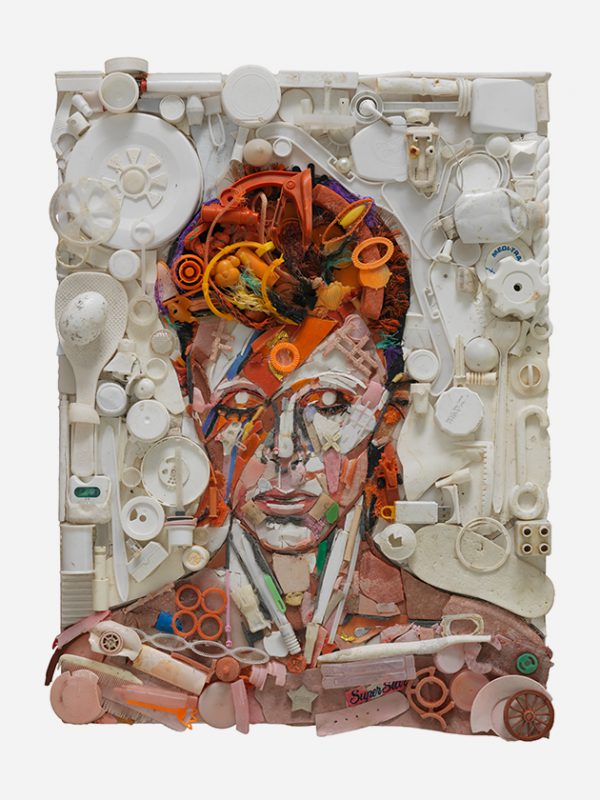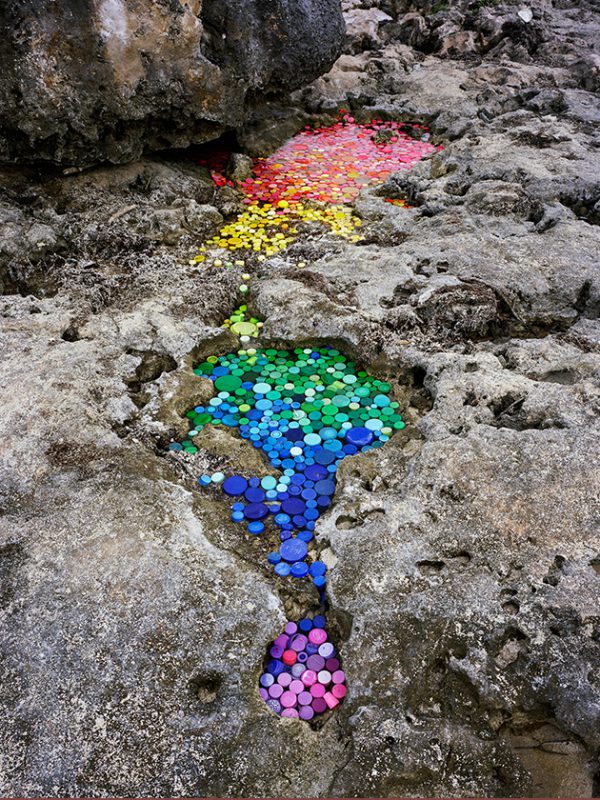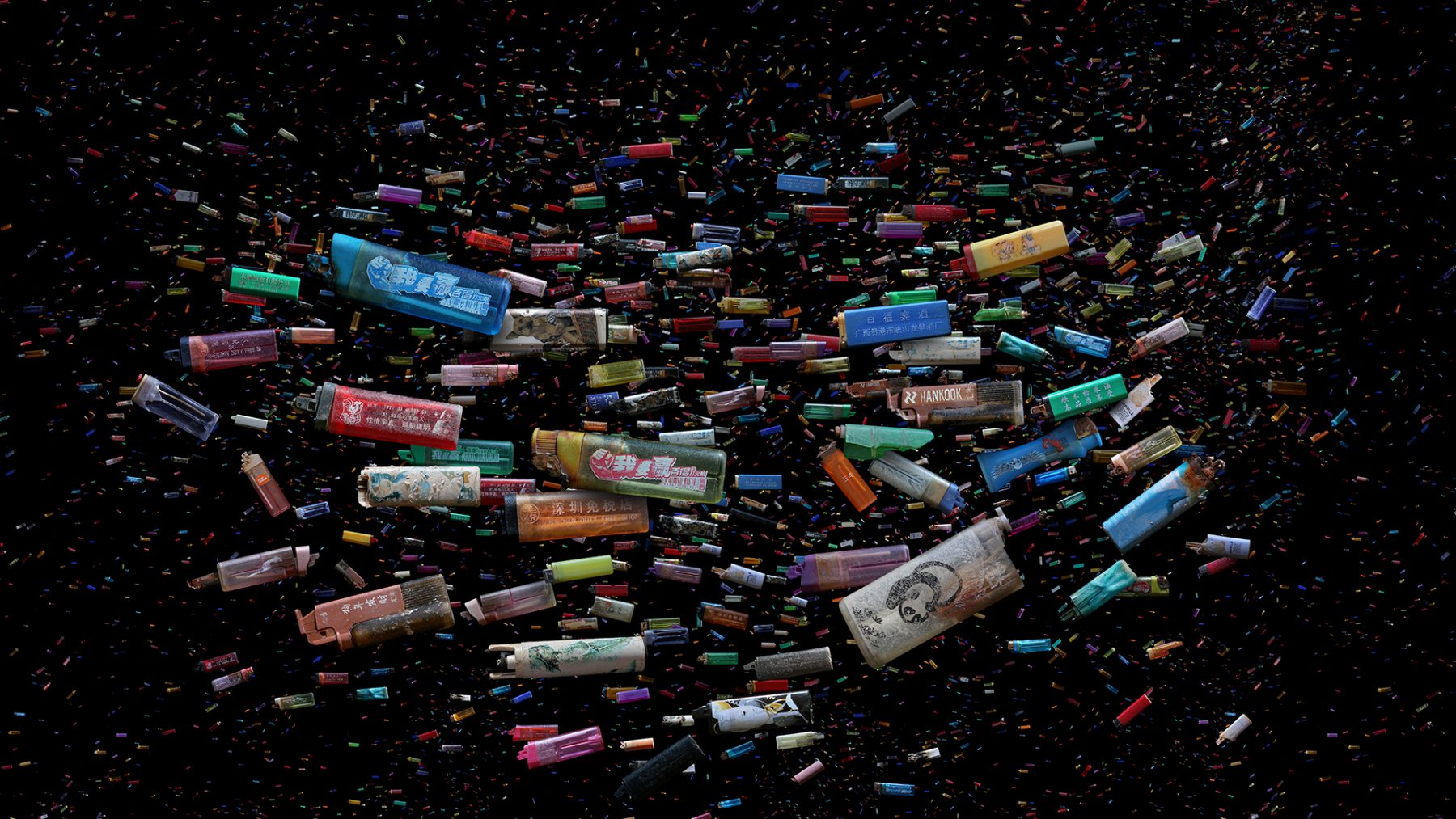Wasser Kunst by Martin Tschechne | 4th June, 2021 | Personalities
Plastic pollution represents a growing threat. Experts are warning that in 30 years’ time there will be more microplastics floating in our oceans than fish. Now these artists are taking action.
By 2050 there will be more plastic churning around the oceans than fish swimming in them.
Can art save the oceans? It certainly can open people’s eyes. And maybe it will finally alert us to how much our lifestyles imperil the planet. All one can do is hope.
The objects lay scattered among the washedup shells and seaweed on the beach. Their bright blue and orange colors seemed strange and disconcerting in this environment, yet also fabulous, somehow. Chris Herms-Glang and her daughter had traveled to the North Sea resort of Sankt Peter-Ording from Hamburg for a break from the city – to enjoy the wind blowing through their hair and feel the sand under their feet.
The beachgoer ran back to her car and fetched a few plastic bags. These she filled with the matted, unraveled, knotted cords that had feathers, broken shells and seaweed stuck to them. Later she put her loot into old pillowcases and stuck them in the washing machine. Later still, with the bundles of unruly plastic rope lying on her workbench at home, newly cleaned but hardened by seawater, she discovered that they were broken, twisted fishing nets, those nets that are euphemistically and almost poetically called ghost nets. She also learned that a huge quantity of these abandoned nets were drifting in the world’s oceans.
The idea for the wigs materialized quickly. The trained graphic designer had spent years working in her field before deciding to attend art college. She was fascinated by performance art, by the idea of combining art and the human body and by working with unconventional, difficult materials. Weren’t these clumps of netting reminiscent of ostentatious, backswept hairstyles, somewhere between the Late Baroque era and pop art?
Herms-Glang doesn’t define herself particularly as either an artist or an environmental activist. “I’m keen to explore materials that have not previously been used in art,” she says. Her art explores the colors, aesthetics and technical possibilities offered by the material, as well as the banality of everyday life that it represents, and its inherent ability to tell a story about the current state of our civilization. She pulls a small green book from her handbag – “Plastik” by Pia Ratzesberger – opens it and points to a simple map of the world’s oceans. She explains, her voice suddenly stern and accusing, that scientists discovered the Great Pacific Garbage Patch floating between California and Hawaii in the 1990s, a carpet of marine plastics four times the size of Germany. Today there are five of them floating in the world’s oceans.
More than five million tons of plastics – fishing nets, PET bottles, shopping bags, straws, toys, coffee cups, fuel containers, beer crates and disposable plates – end up in the oceans every year. It may even be eight or 13 million tons, depending on whether you look at the estimates by the WWF, the Alfred Wegener Institute or the UN. No one really knows for sure.
Each year 135,000 marine mammals and a million seabirds are killed by plastics, not to mention a vast number of fish. Add to that the microplastics that quickly reach our dinner plates by way of the seafood and poultry that we eat. According to environmental and marine scientists, by 2050 there will be more plastic waste on the ocean floor or swirling around in the oceans of the world than fish swimming in them.
This is a horrifying prospect for anyone who looks into the issue in any depth. You may be captivated at first by the brittle charm of the material, like Chris Herms-Glang was, or instantly realize the deadly peril it represents. We’ve all seen the images: turtles that have choked to death on pieces of plastic, strangled seals, dolphins and herring gulls. Or of the whale that starved to death because its stomach was clogged with 80 plastic bags. Images like these have prompted many to ask: “How do you make the people responsible for all this suffering, i.e. all of us, see the connection?”
Artists try to. By aestheticizing the subject matter, by seducing and provoking. And by entertaining. All of these approaches are infinitely more effective than critical speeches and depressing statistics. Those who have trained themselves to look away or to tune out the truth simply have to be coaxed back into engaging with the issue.
Mandy Barker has been trying to persuade people for decades. The multi-award winning British photographer joins scientific expeditions from the polar seas to the Pitcairn archipelago in the southern Pacific Ocean. She documents what she finds floating in the water or washed up on the beach and uses it to create worlds of pure beauty. Liberated from time and gravity, plastic bottles, artificial flowers and toys are suspended in midair. In her high-resolution prints, even old toothbrushes and deflated soccer balls acquire an awe-inspiring aura. Is the artist deploying irony or a dramaturgical delaying effect? The threat to the planet from the seas of garbage isn’t obvious at first glance, but then all the more poignant for it.
The objects collected by Mexican artist Alejandro Durán on the gorgeous beaches of his home country, on the other hand, do not require further digital processing. After all, the artist argues, these items were produced to be eye-catching and to induce impulse buying. The visual noise they create is their primary purpose. So he collects bright-yellow butter containers from Haiti, black shampoo bottles from South Korea and bluish-green toilet cleaners from Norway. He arranges the pieces of garbage by color and turns them into land-art installations, embedded in the rocks or glistening between tufts of beach grass on the Caribbean peninsula of Yucatán.
Particularly galling: The source of the plastic waste from 58 countries that Durán catalogued was the Sian Ka’an region of Mexico, which, due to its natural beauty, is nothing less than a designated UNESCO world heritage site. The artist, who was born there, looks forward to the day he will run out of materials, but isn’t holding out much hope.
Tess Felix also finds the materials for her work just outside her front door. Eleven years ago, a hurricane deposited much of the trash. “Afterwards, you couldn’t see the beach for all the plastic garbage,” says the California artist. Since then, she has been collecting items that regularly get washed up in the San Francisco Bay area: screw tops, plastic tubes, nylon cords, lunch boxes. However, once collected, the artist strips the objects of any shred of their old purpose. She turns them into building blocks for her portraits of friends, pop stars, pinups and heroes of the environmental movement. Felix puts into practice the notion expounded by French philosopher Roland Barthes in his 1957 book “Mythologies”: Plastic isn’t just a material, but also “the very idea of its never-ending transformation.” Like turning a toothpaste tube into a work of art. Some may even find something approaching optimism in Tess Felix’s portraits: No material is so lowly that it cannot serve a higher purpose.
Benjamin Von Wong doesn’t get involved in such semantic discussions. In his studio, the Canadian photographic artist employs lighting and makeup to turn models into mermaids. He piles up plastic straws into enormous waves and arranges empty water bottles to create glistening oceans. The aesthetic of his photos is almost indistinguishable from that used in images advertising tropical paradises. And just like advertising, the images need to be approached with caution. They’re still made of plastic, after all. The viewer’s initial admiration will quickly give way to doubt: Wait a minute, aren’t these exactly the temptations that brought about our current predicament in the first place: extinction of species, polluted seas and climate change?
If the purpose of art is to be seen and understood, Chris Herms-Glang has opened up new platforms for spreading her message: She directs and publishes videos online. Two years ago, the Hamburg-based artist performed at the Oslo opera house with her unruly wigs, an art form she says is here to stay, albeit in a statement laced with ambiguity: “I can guarantee they’ll be around for at least 300 years.”






